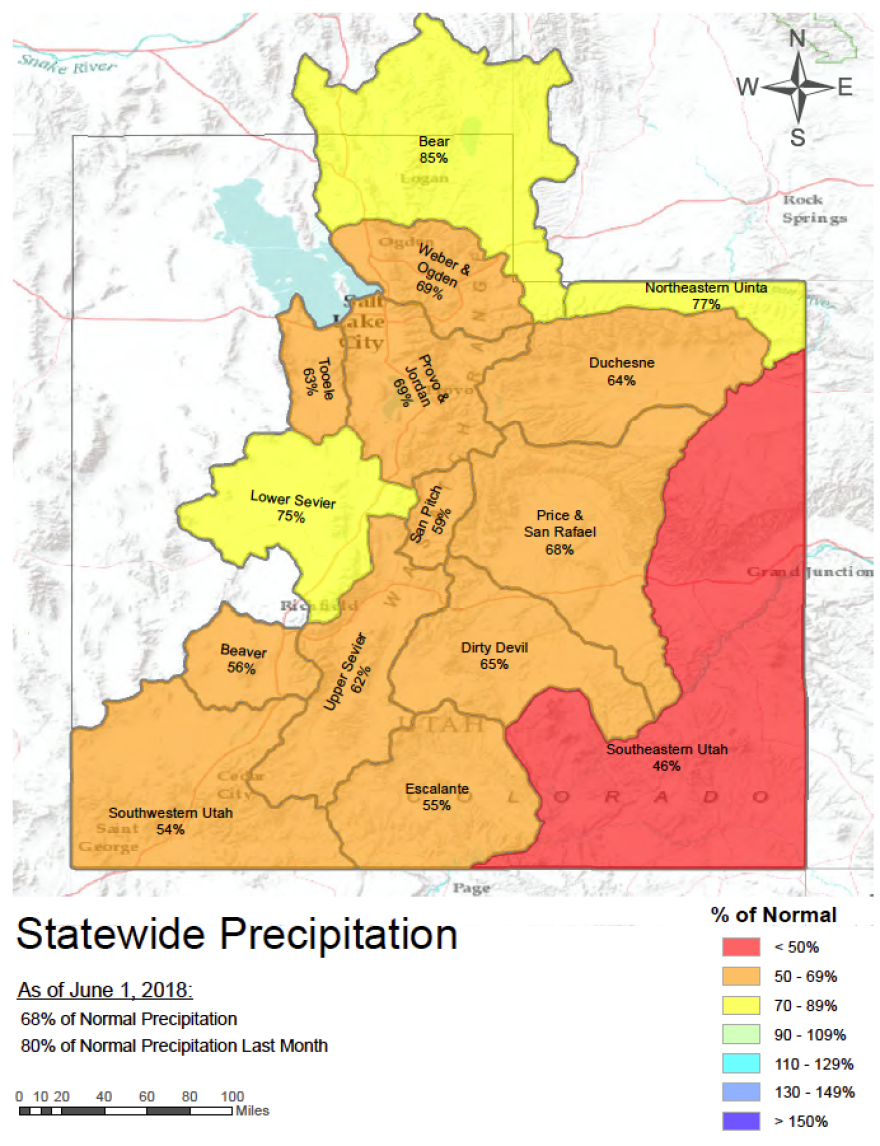Utah received a little more than two-thirds of the snow and rain normally expected from October through May, which could mean more water restrictions in the southern part of the state if it's a dry summer.
The statewide average was just 69 percent, said Troy Brosten, a hydrologist with the Natural Resources Conservation Service, in his latest monthly snapshot of Utah’s climate and water situation. He said this year has been “terrible.”
“It wasn’t the worst year,” said Brosten, “but it was bleak – within the 10 worst years.”

Utah’s reservoirs reflect the shortage of rain and snow. Statewide, levels average at 78 percent capacity.
“From January on, we were constantly playing catch-up and trying to make up for that deficit that we started with and we never really accomplished it,” he said.
Despite the winter’s lean snowpack, northern Utah reservoirs are close to full. Last year’s wet spring is still helping keeping levels fairly high. Reservoirs in southern Utah, however, are only about half full.

The low reservoirs will hit hardest in southern Utah, especially for farmers and ranchers who rely on irrigation. They could see water restrictions.
“Reservoirs tend to help us through those tight years when there’s not a lot of precipitation on a month-to-month basis,” said Brosten, adding that reservoirs don’t fill when the snowpack is low, like this year. “And then we have to plan and conserve where we can.”
But Brosten said northern Utah should be paying attention too, because there’s no guarantee that the water situation will improve next year.




